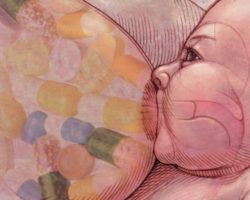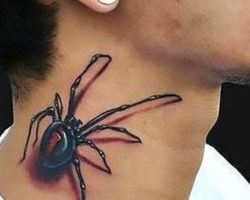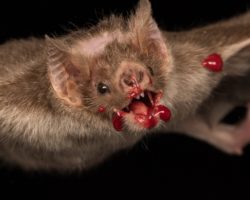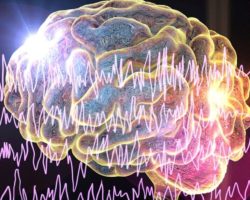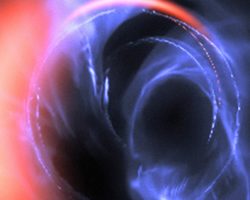Nature Sucks
Everyone in the medical field knows the value of a thorough social history. But in addition to asking the typical questions about drug use and sexual activity, the wise provider practicing in the bayou might consider asking a patient-are you a vampire?

New Orleans, it turns out, is famous not only for Mardi Gras, but also for its vampire community. Or, at least, its community of humans who think they are vampires. These “vampires” reportedly experience fatigue, headaches, abdominal pain, and irritable bowel-like symptoms that can only be cured by drinking human blood. Since humans aren’t blessed with razor-sharp fangs, and human bites carry an incredible risk of infection of a not-so-supernatural sort, “vampires” take advantage of modern medical technology-scalpels and IVs are two popular ways of getting to the good stuff. And, in another break from vampire tradition, donors provide willing consent, and all care is taken to ensure they are comfortable for the entire donation process. How thoughtful.
Whether these modern-day “vampires” have iron deficiency corrected by consuming blood, display psychogenic symptoms, or are, indeed, vampires, drinking blood has long had a place in medicine. Prior to the Enlightenment, a common belief suggested that drinking the blood of a young man would imbue you with his vitality and cure your ailments. Blood was also prescribed as an anti-epileptic, and patients afflicted by seizures would gather around the gallows to drink the blood of recently executed criminals. Whether or not drinking criminal blood imbued them with a criminal’s spirit, though, is a question lost to the ages.
While humans are probably better adapted to eating Cheetos than drinking blood, certain species of bats have found a niche in vampirism. There are many theories about how vampire bats evolved to drink blood. Some scientists suggest vampire bats are specialized relatives of nectar drinkers, while others believe vampire bats moved from eating the parasites of larger animals to becoming the parasites themselves.
Whatever the case, a diet consisting entirely of blood comes with a load of metabolic challenges. The biggest, perhaps, is the question of how to handle the massive intake of iron, which, in high enough concentrations, could cause organ failure. The vampire bat solution to a high-iron diet is a specialized digestive tract-the mucus membrane of vampire bat intestines prevents the absorption of too much iron.

Their diet isn’t the only unique trait vampire bats possess. Vampire bats are the only creatures whose ancestors lost-and ultimately regained-the ability to run. Unlike the succubi of legends, vampire bats can’t rely on their stunning good looks to attract their prey. Instead, they jog up to their sleeping prey-at alarmingly quick speeds of up to three feet per second-and take a bite.
And that speed is necessary-vampire bats cannot put on body fat, and, as a result, can starve to death if they miss a few meals. Though most of us mammals won’t be extending a dinner invitation to a starving vampire bat any time soon, a vampire bat can rely on help from their friends. If
a vampire bat is starving, a fellow member of the bat colony might puke up some of their most recent meal to share. I hear the gastric juices add a spicy little kick to O-positive.
But enough about the finer points of vampirism too steamy for trashy romance novels, let’s talk about how Nosferatu contributes to modern medicine. Vampire bat saliva contains the aptly-named enzyme called Draculin. Draculin is a noncompetitive, tightly-binding factor 10a inhibitor, possessing a similar mechanism of action to apixaban (trade name Eliquis). This similarity has led to investigation into the use of Draculin as an acute treatment for strokes and heart attacks, as well as for chronic anticoagulation.
While research so far shows promise, the function of the Draculin glycoprotein depends on the correct glycosylation of the polypeptide backbone. In other words, if the bonds responsible for the structure of the Draculin are not carefully reproduced in the lab, or are broken down by a patient’s body, the enzyme won’t form correctly and won’t work. So, unfortunately, it might be quite some time before we’re able to fulfill our mad scientist fantasies and prescribe vampire bat venom to our patients.
In the modern day, though, we might keep in mind the diversity of the animal kingdom and our patient population. Many “vampires” are well aware of the stigma of drinking blood, and as a result, fail to inform their providers. But consumption is obviously not without its risks-metabolic as well as infectious. Building trust with our patients, then, might be the best way for us to expand our scope of care into the paranormal.
So if you happen to have a patient with fatigue, abdominal pain, and headaches, and cannot find another cause, consult Van Helsing-and watch your neck!
https://www.bbc.com/future/article/20151021-the-people-who-drink-human-blood
https://www.pbs.org/newshour/science/7-things-you-didnt-know-about-vampire-bats
https://www.sciencedirect.com/science/article/pii/S0167483899001600























